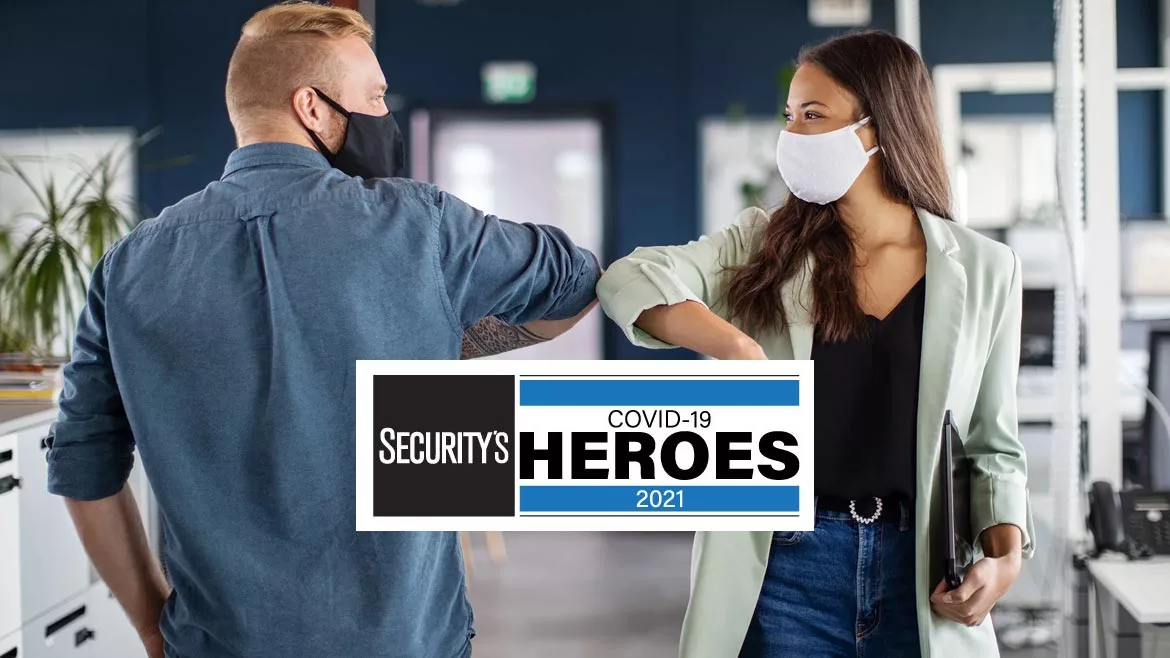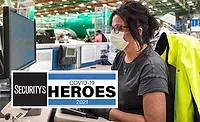COVID-19 Heroes
Boston Scientific’s Global Security and Resiliency Department takes the lead in COVID-19 response
The global medical device manufacturer has maintained operational continuity throughout the pandemic, using clear processes and procedures mixed with a healthy dose of care.

Boston Scientific’s 17,000 products treat about 30 million patients a year. The medical device and healthcare solutions manufacturer has approximately 38,000 employees and locations in 40 countries around the globe. The company and its leadership team take pride in caring for patients around the world, as well as in caring for their own employees.
Knowing this is a part of the company’s fabric, Jack Sullivan, Global Chief Security and Resiliency Officer at Boston Scientific, began reimagining the role of security within the organization when he came on board in 2017. A veteran of the military and the corporate security world — having previously held security and resiliency leadership roles at Dunkin’ Brands and Starbucks — Sullivan is a strong believer in the security function of an organization as business enablers and problem solvers.
With an eye on proving security’s value to the overall enterprise and showing employees how much they care, Sullivan and the Global Security and Resiliency (GS&R) team set about taking direct responsibility for and perfecting the organization’s emergency management and business continuity and resiliency functions within the enterprise — long before COVID-19 became a reality.
Previously, responsibility for business continuity and crisis management was shared across multiple sites and teams, and Sullivan saw an opportunity to expand security’s role there. “I petitioned that security take on those responsibilities and truly position the company to take a holistic approach across all sites to protect our people and offer accountability,” he recalls.
The GS&R team of 16 full-time employees set about streamlining crisis management and communications protocols; implementing a new mass notification tool; and defining processes, procedures, roles and responsibilities for emergency response.
Indeed, in the first quarter of 2020, when COVID-19 became a global health pandemic, Boston Scientific and its Global Security and Resiliency (GS&R) department were well-positioned to respond. With far-reaching global operations, the team had already tested these procedures and protocols in place with a variety of events that had occurred over the last few years, including hurricanes and wildfires.
“We’ve had practice many times over prior to COVID with forest fire evacuations, hurricane response and more. Not only does it help the company, but it has an ancillary benefit of retention because we are taking care of our people. That’s very important to us,” Sullivan says.
The Boston Scientific Crisis Management program was set up with cross-functional collaboration as a key pillar. Regardless of the event or incident, the team reaches out to the company’s defined network of small and medium-sized enterprises (SMEs) across all business functions to determine whether employees, facilities, suppliers or systems are impacted. Having the right information available to the right people allows the company to make informed, timely decisions.
So, when Sullivan received an email from one of the company’s intelligence analysts that a potentially catastrophic incident was on the horizon in China, the team got to work, employing many of its tried and true methods of communication, intelligence and response. “I contacted my boss [Executive Vice President of Global Operations Edward Mackey], and I said, ‘Something is coming, and it will not be able to be sequestered.’ Of course, I didn’t picture it at this level,” he says.
In short order, Sullivan, Mackey, the GS&R team, and cross-functional team members and departments were having discussions and intelligence briefings on the developments of COVID-19. The security team handled delaying and limiting travel, returning traveling employees and getting those home that were abroad, as well as keeping those located in other countries safe.
Sullivan directed the security team to begin working remotely before the overall enterprise moved to remote work. “We couldn’t have any of us getting sick,” he says. The company had already built the capacity to handle remote work for employees years before COVID-19, which allowed the organization to make remote work decisions quickly and seamlessly.
Ty Harris, Director of Business Continuity and Crisis Management at Boston Scientific, led many of the team’s calls and intelligence briefings, pulling in all the right people, organizing the response, and “carrying the battle rhythm for the organization,” Sullivan says. Another key team member, Intelligence Analyst Kirstin Click, helped — and continues to help — provide critical data and intelligence to the GS&R team and enterprise-wide to aid in informed decision-making.
The GS&R department handled many initial workstreams that have since been handed back to supporting business units, such as PPE sourcing, testing and onsite clinic setups, contact tracing, health screenings and more. It’s a great source of pride and a huge vote of confidence for Sullivan and his team that the GS&R team was at the forefront of so many important tasks.
At the beginning of the pandemic, for example, when proper PPE and safety equipment sourcing was a big challenge, the GS&R team used their contacts to source masks, gloves and testing kits. In fact, the team was so successful at sourcing much-needed safety equipment that several state governments asked the company to help facilitate their PPE purchases.
Throughout the pandemic, Boston Scientific has been able to maintain manufacturing volumes and continue to provide life-saving medical devices to patients worldwide. In addition to sourcing PPE, implementing remote work where possible, and rolling out contact-tracing procedures, GS&R used its intelligence to focus on localized metrics for each of its locations while applying that intelligence to clearly defined return-to-site and response protocols.
To lessen future operational disruptions, for example, Harris initiated “preemptive” closure plans with clearly defined responses based on localized data for all of the company’s 20-plus manufacturing campuses in early April 2020. Rather than wait for a community-spread event to force an unplanned shutdown, each site shut down for two weeks, only resuming operations once senior leadership teams reviewed and approved reopening plans and procedures.
“We look at the current prevalence of rate of disease at our locations, and we have set triggers with defined actions to take for each threshold,” Sullivan explains. To date, Boston Scientific has been able to maintain operational continuity throughout the pandemic without an internal community spread due to its safety protocols and response procedures.
Though the pandemic is not over, Sullivan says the company is well-positioned to continue weathering the ups and downs of the future. The security function was already a respected, valued department of the overall enterprise before the pandemic, but the events of the past year and a half have only helped to elevate that value and allowed the GS&R department to enable the business in ways they hadn’t done previously.
“As a team, there’s no greater compliment than being given missions or tasks that aren’t necessarily in our wheelhouse, but we are trusted enough to know that we will get it done and do it well,” Sullivan says of senior leadership at the company. “It’s incredibly rewarding to lead the charge against COVID-19 as a team with a company like ours. As a team, we are enablers of the business, and we can solve the hardest problems because we are resourceful and we have relationships around the world that have helped.”
Looking for a reprint of this article?
From high-res PDFs to custom plaques, order your copy today!







